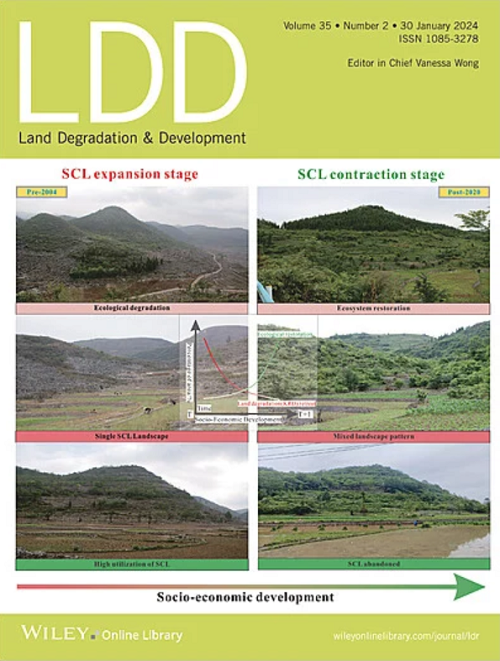Nonlinearity of China's Carbon Sink Increasing and Its Nonlinear Relationship With Land Use Patterns
IF 3.6
2区 农林科学
Q2 ENVIRONMENTAL SCIENCES
引用次数: 0
Abstract
China's terrestrial carbon sink, quantified by net ecosystem productivity (NEP), has exhibited significant yet spatially heterogeneous growth over the past four decades, driven by climate change, land use transitions, and ecological restoration policies. However, the nonlinearity of NEP enhancement and its coupling mechanisms with dynamic land use patterns remain poorly understood. This study integrates linear trend analysis, ensemble empirical mode decomposition, and boosted regression tree (BRT) modeling to systematically unravel the nonlinear characteristics of NEP trends (1981–2019) and their landscape‐mediated drivers across four ecoregions. Key findings reveal that: (1) While 43.75% of China's land area showed a linear increase in NEP, only 13.46% exhibited monotonic growth (Trend中国碳汇增加的非线性及其与土地利用方式的非线性关系
以净生态系统生产力(NEP)量化的中国陆地碳汇在过去40年表现出显著但空间异质性的增长,主要受气候变化、土地利用转型和生态恢复政策的驱动。然而,新经济政策增强的非线性及其与动态土地利用模式的耦合机制仍然知之甚少。本研究结合线性趋势分析、集合经验模式分解和增强回归树(BRT)模型,系统地揭示了四个生态区新经济政策趋势(1981-2019)的非线性特征及其景观驱动因素。结果表明:(1)43.75%的中国土地面积NEP呈线性增长,13.46%的土地面积呈现单调增长(TrendIN), 16.46%的土地面积呈现趋势逆转(TrendDE‐TO‐in),非线性动态占主导地位。(2)土地利用格局指数(LUPI) -跨越破碎化(PD)、优势度(LPI)、连通性(CONTAG)、形状复杂性(AWMPFD)和多样性(SHDI) -呈现出不同的轨迹:华南和青藏高原(TP)经历了破碎化(PD增加)和连通性(CONTAG减少)的增加,而西北(NWC)呈现相反的模式,反映了区域特定的人为和生态压力。(3)趋势区(如NWC和TP)受NWC和CONTAG的LPI控制,其中阈值超过(斜率>;稳定碳积累。NEP的趋势逆转区依赖于PD和AWMPFD,其中边缘效应的初始下降(斜率<;0)先于新经济政策的恢复。值得注意的是,NEP对LUPI梯度的响应在单调增加的区域呈现U形阈值(斜率= 0),而在TrendDE - to - in区域呈现单调变化,强调了历史景观配置的遗留效应。通过将景观生态学理论与非线性趋势分解相结合,本研究推进了对多尺度土地利用模式如何调节碳汇的理解,为空间适应性土地管理提供可操作的见解,以支持中国的“双碳”目标。
本文章由计算机程序翻译,如有差异,请以英文原文为准。
求助全文
约1分钟内获得全文
求助全文
来源期刊

Land Degradation & Development
农林科学-环境科学
CiteScore
7.70
自引率
8.50%
发文量
379
审稿时长
5.5 months
期刊介绍:
Land Degradation & Development is an international journal which seeks to promote rational study of the recognition, monitoring, control and rehabilitation of degradation in terrestrial environments. The journal focuses on:
- what land degradation is;
- what causes land degradation;
- the impacts of land degradation
- the scale of land degradation;
- the history, current status or future trends of land degradation;
- avoidance, mitigation and control of land degradation;
- remedial actions to rehabilitate or restore degraded land;
- sustainable land management.
 求助内容:
求助内容: 应助结果提醒方式:
应助结果提醒方式:


